The Big Read – Pickups & SUVs (4/5) – How a cheetah becomes a leopard
Even for the Chinese, Liebao is not a well-known brand. The car manufacturer flies quite under the radar, has never sold large numbers of cars except for a very short period of time, and seems to have completely missed the boom that the local market has taken. Still, the brand manages to survive miraculously for the time being, albeit with great difficulty.
The very beginning: from military workshop to the first cars
Chinese companies like to exaggerate their history, so let’s start this story in 1950. We are in Guangzhou, the capital of Guangdong province, and located just across the border with Hong Kong. The communists have just won the civil war and in Guangzhou, the military leaders are reorganizing their logistics. Machinery from three former Kuomintang arsenals and a large group of workers are gathered in a single building in the Shahe district of the city. Known as the Ordnance Repair Shop of the Guangdong Military region, the workshop is responsible for the maintenance and repair of army equipment, weapons, and vehicles. In 1952 the workshop becomes part of the larger South China Military Region and in 1957 it’s given an official name: 202nd Factory of the Guangzhou Military Region.
While the workshop maintains and produces artillery, firearms, and optical equipment, the country’s relations with Russia start to deteriorate. Because of strategic reasons the workshop moves to Yongzhou (Hunan province) in 1965, where it is put under the direct control of the People’s Liberation Army. It also gets a new name, PLA Factory No. 7319. The troubled times in China provide an abundance of ordnance work and by the end of the decade, the factory employs more than 1,100 people. Meanwhile, it merges with PLA Factory No. 743, and jointly the factories are known the PLA Factory No. 719.
The old car factories in China often have one of the following two histories. Either it is a car factory established by a government body as an industrialization or employment project, or it is an old army workshop, that later switches to building vehicles. The former suffered greatly in the 1960s and 1970s due to social unrest and political instability, but start to thrive under the economic reforms of the 1980s. The latter thrives in the 1960s and 1970s, when the defense industry is in its heyday, and struggles when the military’s influence wanes.
PLA Factory No. 7319 obviously belongs in the second group. In the early 1980s, the need for maintenance and repair of military equipment falls sharply and Factory No. 7319 turns from a successful military business into a loss-making workshop. Under these difficult circumstances, 31-year-old Li Jianxin is chosen by the staff as the new company manager in 1984.
His first order of business is getting the machines working again. Li sets up a production line for inner tubes. Because the factory can make 300,000 per year, there is again some money coming in again. To this day, the company also makes rubber products. However, Li also convinces his superiors in the army that producing cars would be a good idea. Local government officials help him to a copy of the blueprints of the Beijing BJ212. And so, around 1987 (the exact date is somewhat unclear), the history of Factory No. 7319 as a car manufacturer begins.
Changfeng is born and Mitsubishi shows up
Production starts with a light off-road command vehicle for the army, called Changfeng CJY6420A. This car had the code name Liebao during production preparation, which means cheetah. It’s of course based on the Beijing jeep and sold to the military and government services only. The car itself wasn’t developed by Changfeng, but by another PLA factory in Fujian province, called Bamin. The transition to car making requires an upgrade of the factory and in 1992, Changfeng buys some machinery for the modernization of the production line from Mitsubishi. This is the first contact with the Japanese company, but they will form the basis for the development of the Liebao brand.
Li Jianxin identifies the Japanese company as a possible partner and negotiations about cooperation started shortly after. In December 1994, the two companies enter into a technical partnership and Changfeng acquired the technology of the second-generation Mitsubishi Pajero, the model that debuted in 1991. Trial production of the car in China starts in 1995.
October 16, 1996, is a big day in the history of the No. 7319 Factory, because that is the day it was renamed Hunan Changfeng Automobile Manufacturing and officially entered the automotive industry. At the same time, the PLA establishes Changfeng Group, the holding company for Changfeng Auto, which holds 80% ownership. Mitsubishi joins in with 20% of the shares. Changfeng Group also gets its national production license. The military stays in control of the carmaker for five more years, but in 2001 it transfers the control of Changfeng Group to the Hunan provincial government. With this, Changfeng Group transitioned from an army workshop to a state-owned enterprise.
Although the company is called Changfeng, it uses the former development code name for a brand. This is Liebao, which means Cheetah, and I’ll refer to the cars as such. With the arrival of Mitsubishi, the production of the Beijing Jeep is discontinued and switched to the Pajero. Changfeng makes the car in two variants: the simple Cheetah Kylin (Qibing) with four-cylinder engines and the more luxurious Black King Kong (Heijingang), which is also available with V6. The military remains an important customer, but the cars are now also being sold to the general public.
In 2002, after the transfer of power to Hunan Province, Changfeng Automobile opens a new factory in Changsha and two years later, the headquarters also moves to that location. Until then, Changfeng Automobile was located in Yongzhou, also in Hunan Province. Production of the new Cheetah Feiteng, the Chinese version of the Pajero-io (or Pajero Pinin as the car is also known), begins in Changsha as well. This smaller model allows Changfeng to break through the 10,000-car sold-a-year barrier.
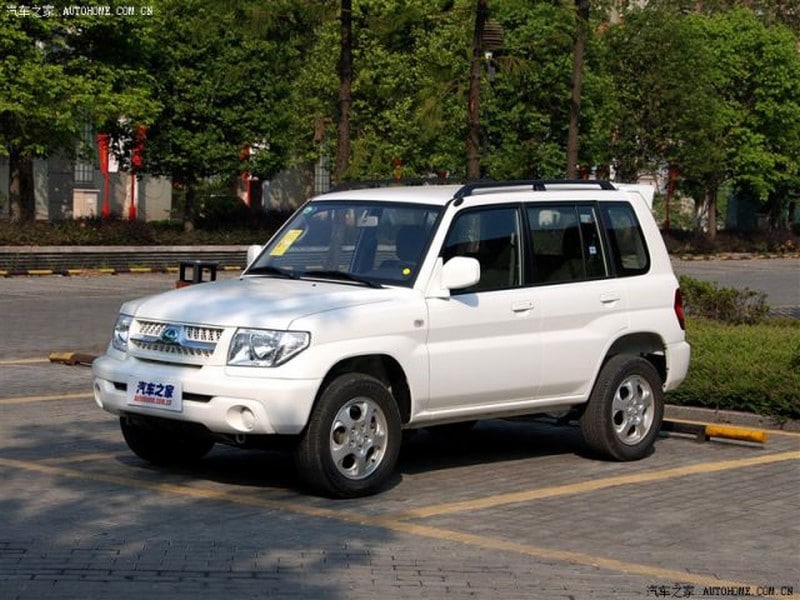
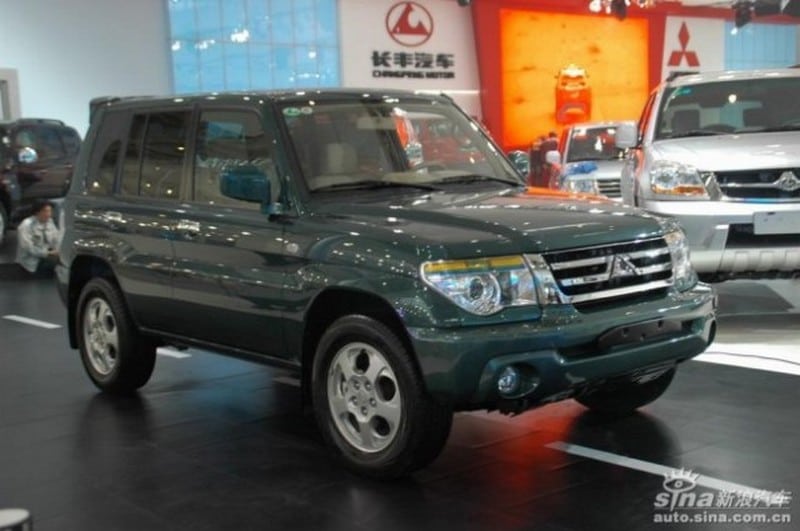
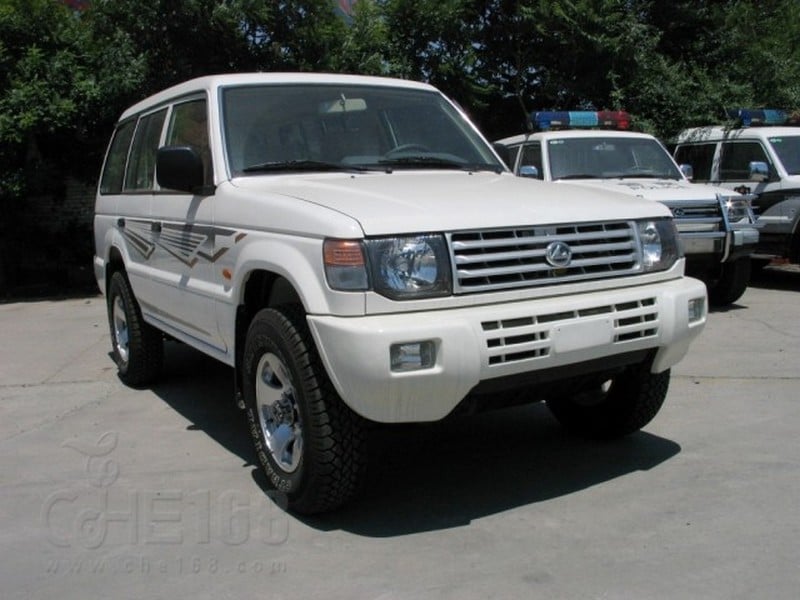

By then, Changfeng Group has transformed from an army unit to an industrial manufacturing company quite successfully, and Li Jianxin is ready for the next step. First, he needs some money, so Changfeng Automobile is listed on the Shanghai Stock Exchange in June 2004. Changfeng Group holds 51% of the shares, Mitsubishi 15%, and the rest is freely tradable.
Part of the money flows to new product development. Until that moment, the products of Changfeng were Mitsubishi’s produced under license with a Liebao logo. However, when the Pajero mk.2 production comes to an end in Japan around 2000, the entire production line is shipped to China. Changfeng also assembles the third generation Pajero from the early 2000s, but that car is sold by Mitsubishi itself as Pajero with Mitsubishi logos.
In November 2007, however, the first self-developed Cheetah model launches on the market. This Cheetah CS6 is a Pajero mk.2 with a body designed by Changfeng. The company follows the same principles for its second car, the CS7. This is the Feiteng/Pajero-io with Cheetah’s own design. Due to the two new Cheetah models, sales increase to over 25,000 copies in 2008, making Changfeng one of the larger SUV manufacturers in the country.
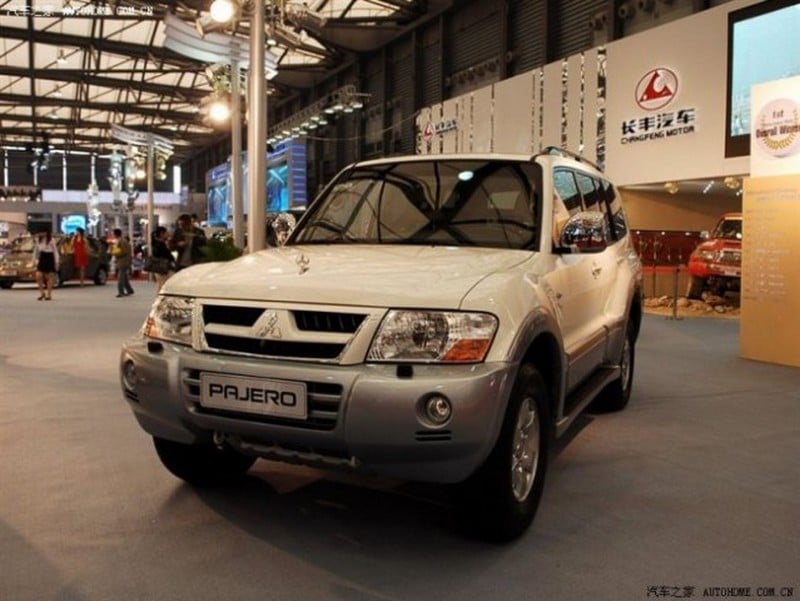

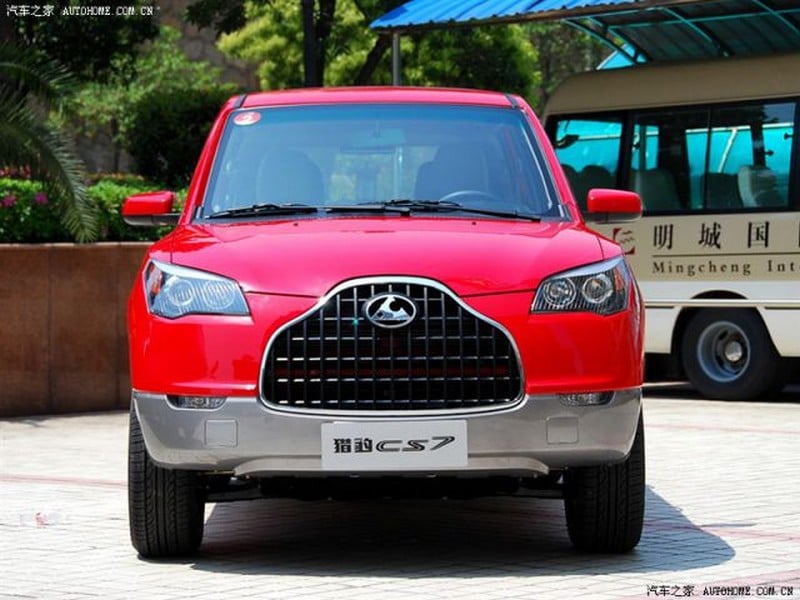

The Yangzi intermezzo
In 2022 all of China’s mobile phone makers announced their entry into the car industry. In the next chapter we’ll explore Changfeng’s cooperation with the mobile phone industry, but first a slightly different detour. Because the phone makers are not the only foreign industry with an interest in automotive. They are preceded by the tech industry of property developers and appliance makers. The home appliance industry showed interest several times, the first time being in the early 1990s.
China Yangzi Group is such a home appliance maker. Currently, it makes kitchen equipment, air conditioners, home improvement materials, cleaning products, beer, and much more, but it started in 1980 with refrigerators. Yangzi Group is owned and set up by Anhui Province with its headquarters in Chuzhou. In 1993 it bought the defunct Chuzhou Bus Factory, eyeing an entry into the automotive industry. In 1997 Yangzi reorganized the bus factory with the help of the Bank of China, forming the Anhui Bank of China Yangzi Automobile Industry. The car company divided its attention between modified special purpose vehicles and its own line of pickups and SUVs. This latter product was of the generic type, a copy of an early Isuzu pickup.
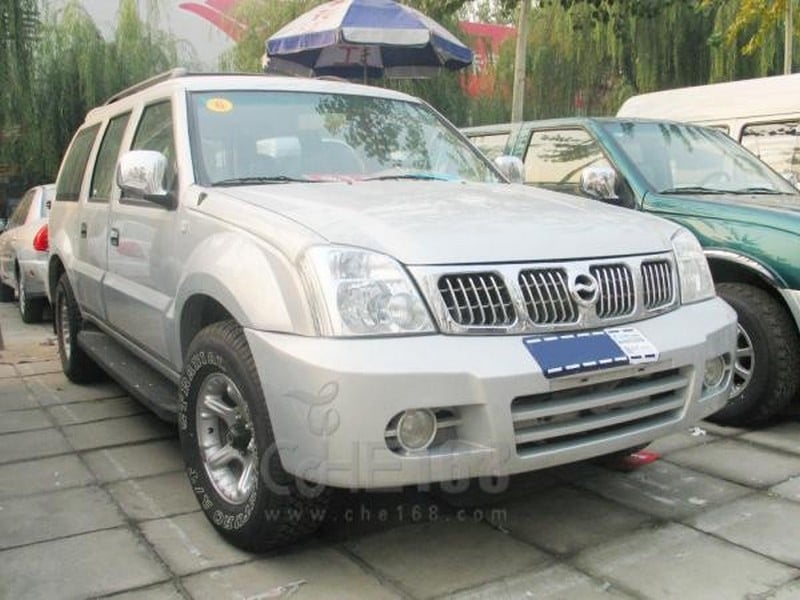
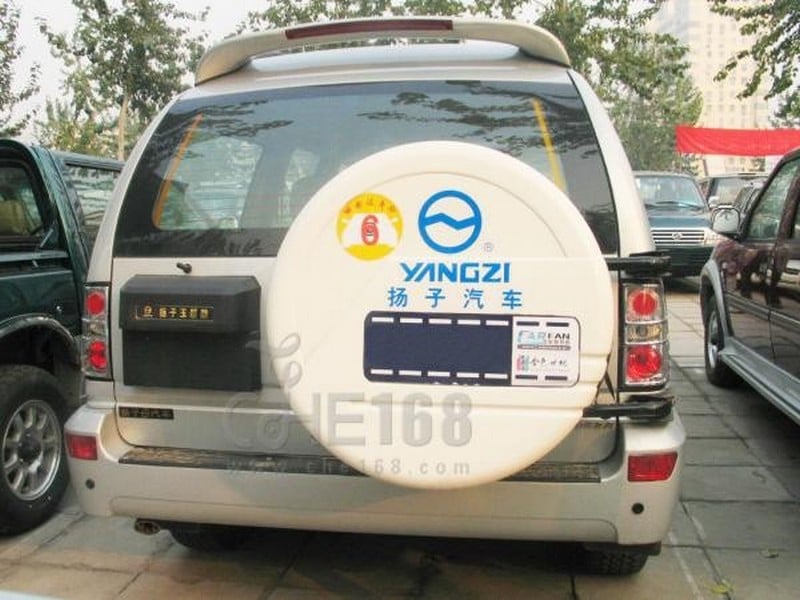
With the capital raised from its IPO, Changfeng takes over Yangzi Auto in March 2005. Initially, both Bank of China and Yangzi Group retain a minority shareholding, which they both eventually sell to Changfeng. Yangzi markets two series of pickups, the basic Feiling and the slightly more up-market Feiyang. Both models are also available with an SUV body. Changfeng retains this line-up and also the brand name. Remarkably, most Yangzi pickups are sold outside China. The company exports to Africa and South America, one of the first Chinese car companies to do so successfully.
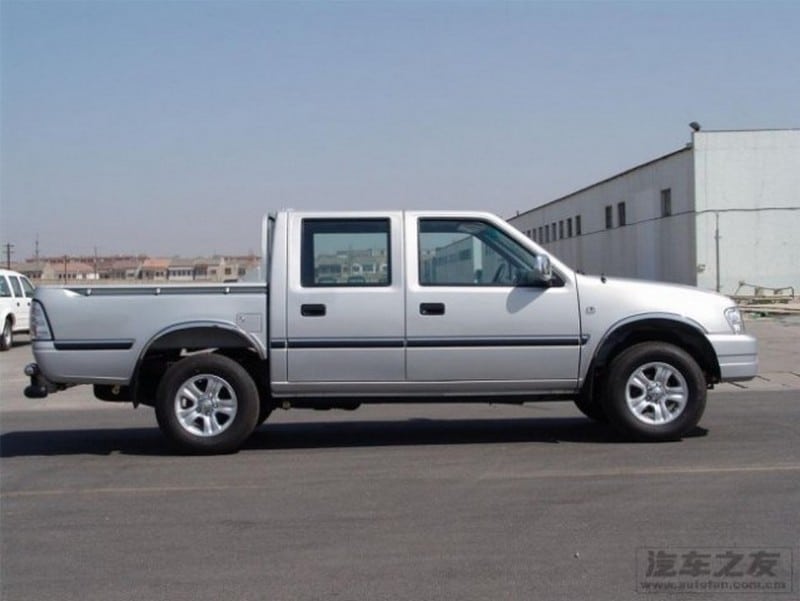
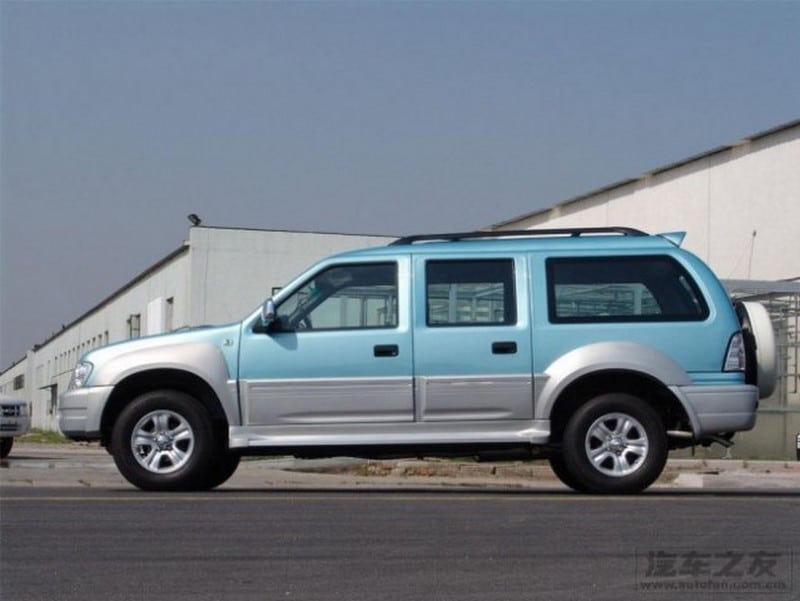
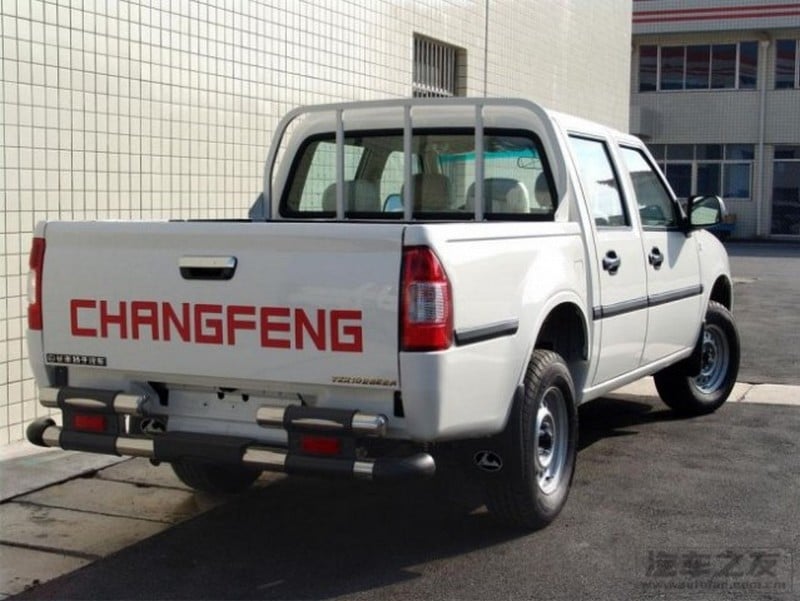
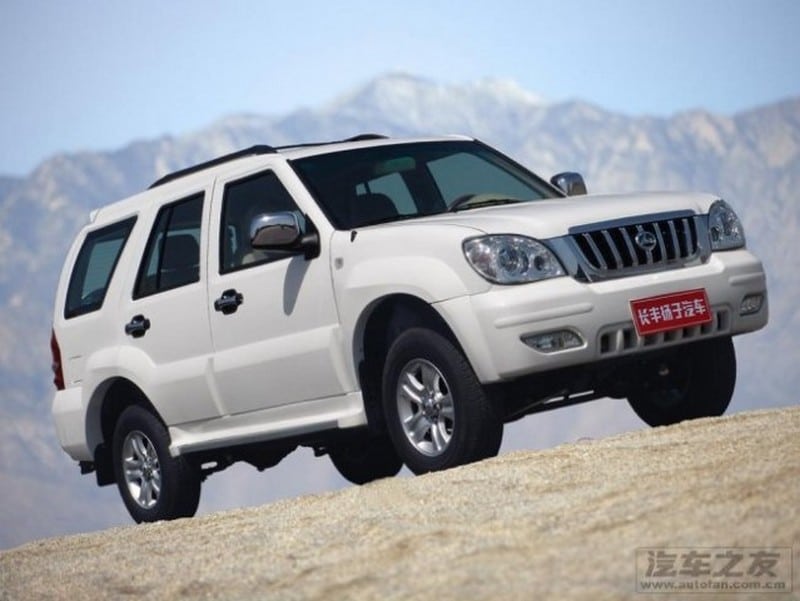
The failed partnership with Bird Mobile
Up till this part of the story, Changfeng has only produced SUVs and pickups. However, Li Jianxin wasn’t blind to the quickly growing car market in his country. Changfeng tried to get access to the technology of the Mitsubishi Lancer, but that project ended up in Mitsubishi’s other joint venture with the Fujian Motor Group. Fortunately, Li stumbled upon the ambitions of a mobile phone maker.
Huawei and Xiaomi are certainly not the first phone makers to try their hand at car manufacturing. Twenty years ago, Bird Mobile was one of the fastest-growing makers of mobile phones in China and the company actively chased involvement in the automotive industry. To this end, it set up an automotive R&D department in 2003. Initially, Bird Mobile acquires the production rights to the first generation Seat Ibiza for the Chinese market. We’ve encountered this car before in the story about SAIC and truck maker Nanjing Automobile, with whom Bird partners for the production of the car. Bird and Nanjing, however, get into conflict and the partnership ends. Bird then takes over bus builder Ningbo Shengma and tries to make a car that way. However, they do not get a production permit from the Chinese government.


And that’s how Bird ends up with Changfeng. In 2006 both parties sign a technical agreement and begin the development of a car, which bears some resemblance to a Renault Scenic. However, its introduction coincides with the global credit crisis, and putting the car on the market requires further investments. Bird Mobile weighs its options and abandons the cooperation. So Changfeng inherits the entire project, including an engine factory. Changfeng produces the car from 2008 onwards as the Cheetah Qiling M1A (Kylin). Unfortunately, it is a major commercial flop and although some versions keep being listed within the MIIT catalog until 2016, the Qiling M1A quickly fades into obscurity.
Changfeng shows four more passenger cars in the next two years, none of which are ever produced. The Qilin CP1A (Kyrin) appeared at the 2008 Beijing Auto show. It was a nice-looking compact sedan. At the Shanghai show a year later, Changfeng brought two versions of the Acumen. The CP21 was a sedan and a shameless copy of the Volvo S40. A rather pretty and much more original coupe (CP23) was also on display. A hatchback version (CP22) was supposed to be on the Guangzhou Show later that year, but didn’t make it to the exhibition floor. We’ll meet the Acumen sedan again next week.
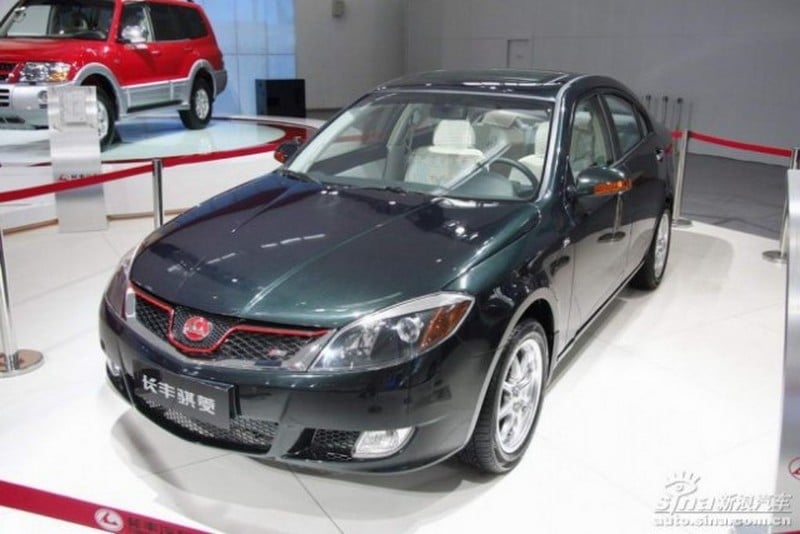
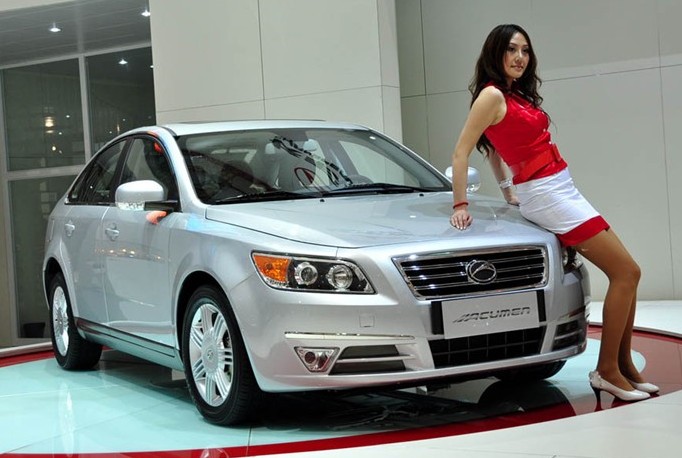
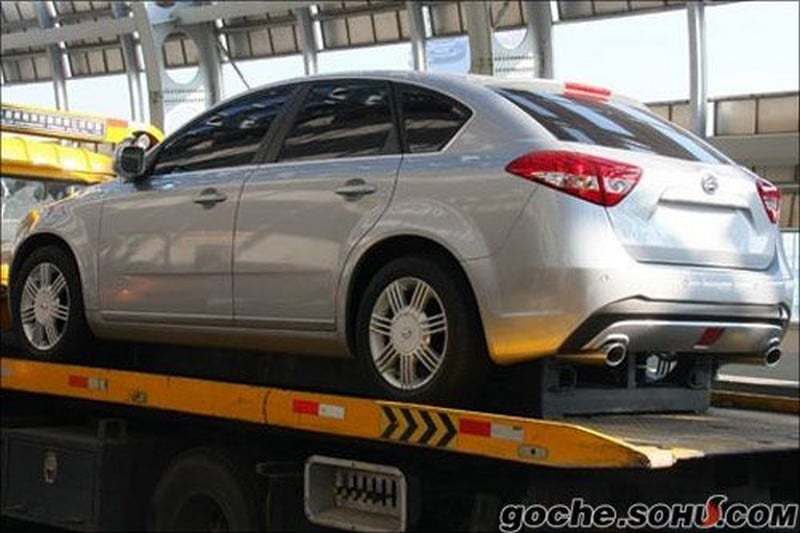
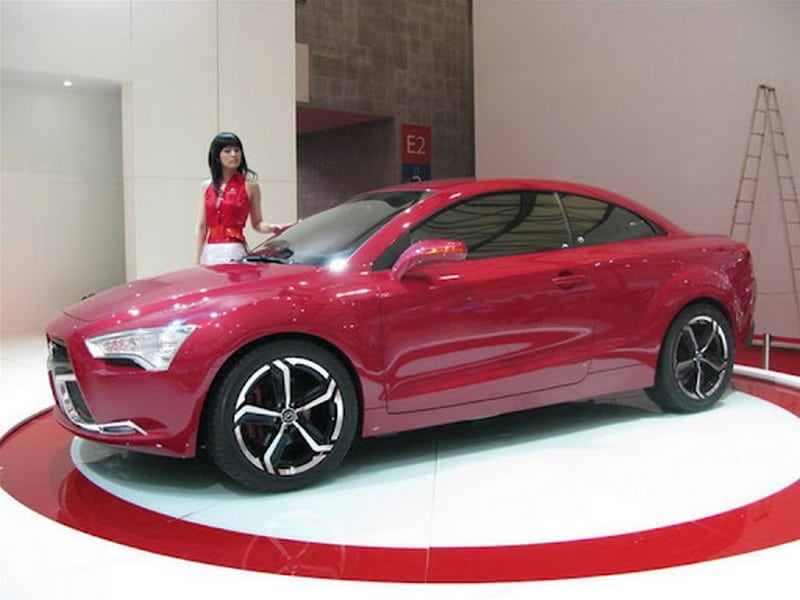
Bird Mobile tried to achieve car production once more as a bus manufacturer and introduced several electric city buses under the Ningbo Shengma brand. This time they get the approval of the government, but still, it never comes to production. In 2012, SAIC-Volkswagen acquires Ningbo Shengma and Bird Mobile’s automotive ambitions come to an end.
Acquisition by Guangzhou Automobile
Despite the Bird episode and thanks to an increased scale and the fact that Changfeng now has its own R&D capacity, the brand appears on the radar of many larger state-owned manufacturers as a potentially interesting partner. Ultimately, it is Guangzhou Automobile (GAC) that strikes. GAC is experiencing rapid growth in the late 2000s and has successfully started to roll out its Trumpchi brand. While doing so, they take over various companies in order to increase their own capacity. In October 2009, GAC acquires 29% of Changfeng Automobile’s shares from Changfeng Group, making it the largest shareholder. The car factory is subsequently called GAC-Changfeng Automobile.
For some time the cooperation progresses very well. GAC-Changfeng has access to GAC technology, introduces several updates to their cars and a Cheetah branded pickup (CT5) and sales exceed 100,000 cars per year. This may seem like a bright scenario, but Changfeng Group’s managers are far from confident about the future.
The reason for concern is due to developments at GAC-Gonow. Just before GAC acquires Changfeng Automobile, it also takes over the small van manufacturer Gonow. Immediately after the acquisition, that brand is stripped and disappears from the market. GAC adds all of Gonow’s assets to its own production capacity for the Trumpchi brand. Changfeng Group executives fear a similar scenario for the Cheetah brand, especially when GAC starts making advances toward their technology partner Mitsubishi.
From the outside, it may appear that this is exactly what happens. During the years from 2011 to 2013, there are major changes in the shareholding relations between Changfeng and GAC. From November 2011 to February 2012, GAC buys all shares in Changfeng Automobile held by Changfeng Group and Mitsubishi and subsequently delists the company from the Shanghai Stock Exchange. Six months later, GAC transfers half of the stock to Mitsubishi, making Changfeng Automobile a 50/50 joint venture with the Japanese. The name Changfeng Automobile ceases to exist, from then on the company is called GAC-Mitsubishi Motors.
So, the doom scenario becomes reality? Not quite. Behind the scenes, Changfeng Group and its leading executives set up a new company called Hunan Liebao Automobile. This company has a large number of shareholders, consisting of Changfeng Group, the individual managers of the group, and several local governments where the old Changfeng Automobile had factories. In March 2013, GAC transfers all trademark rights to the Liebao name, all intellectual property concerning the cars, and four factories in Changsha, Yongzhou, Jingmen, and Chuzhou to Liebao Automobile. This final asset transfer means that Liebao has completely separated from GAC again.
From Cheetah to Leopard
Now we enter what you could call the ‘modern history’ of Changfeng Liebao. During the transition period in 2011 and 2012, production of the Cheetah models is largely at a standstill, despite their sales having peaked just before that. With independence regained, Liebao rightfully thinks it’s time for a new start.
The first noticeable consequence of this independence is the brand name. As said, Cheetah is the translation of the Chinese name Liebao, but it was never used as an official international name. It was just called that way in the Western world, probably because Cheetah sounds better than Liebao. Back on its feet, Liebao remains Liebao in China, but it now introduces a proper international translation, Liebao opts for the somewhat curious Leopaard. No one understands why the second ‘a’ is in the name, but the new Liebao is proud enough to put the English name on its cars, even in China.
Production soon resumes at the end of 2013 with the well-known models based on Mitsubishi technology. The CS6, based on the 1991 Pajero, is still the main model. It’s joined in the line-up by the Q6, based on the same tech and sporting an almost-Pajero body. The smaller CS7 is now called C5 (Pajero-io) and is available as an EV. The only pickup is the Leopaard CT5, as the Yangzi brand disappears.
In the following years, Leopaard introduces a series of new models alongside the existing ones. The CS10 (in 2015, replacing the C5) and the smaller CS9 (in 2017) are new SUVs, that borrow a lot of technology from their short-lived GAC period. In 2017 the Leopaard CT7 pickup on the same technical platform replaces the CT5. And finally, the Leopaard Mattu, an upgraded CS10, completes the model line-up in 2018.
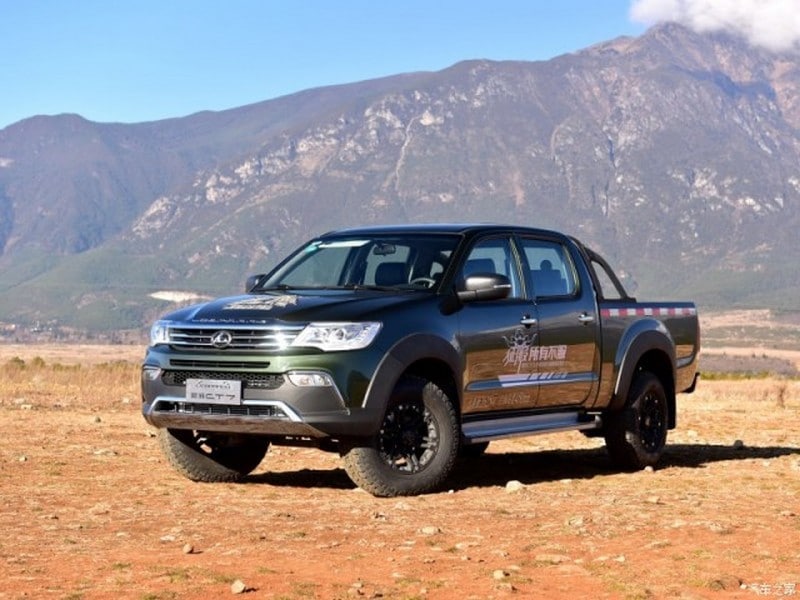

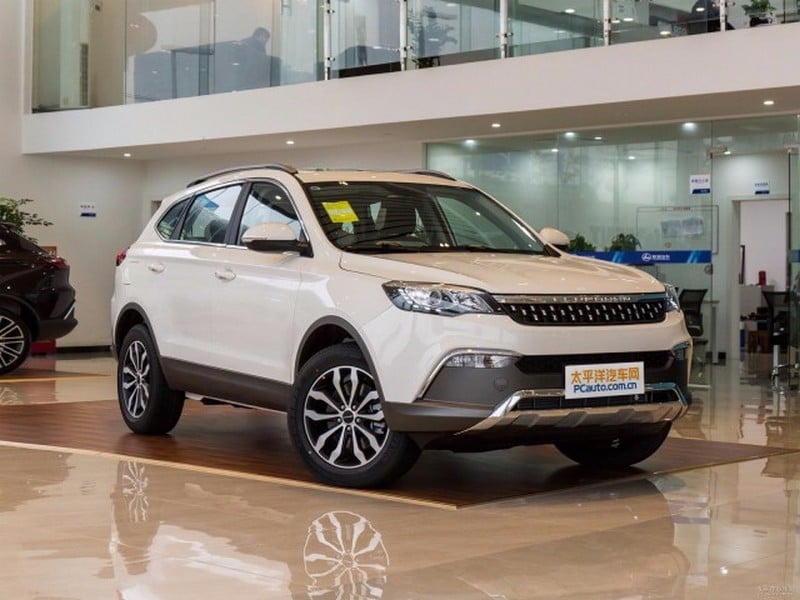
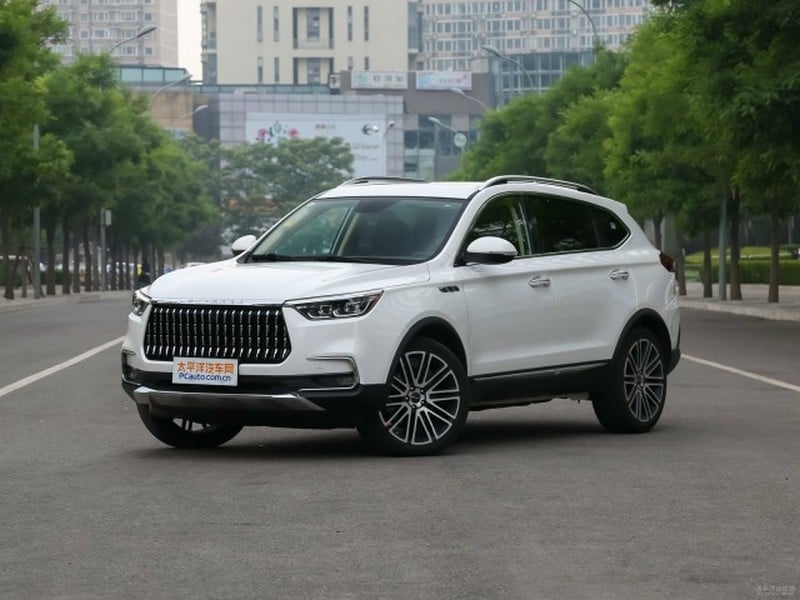
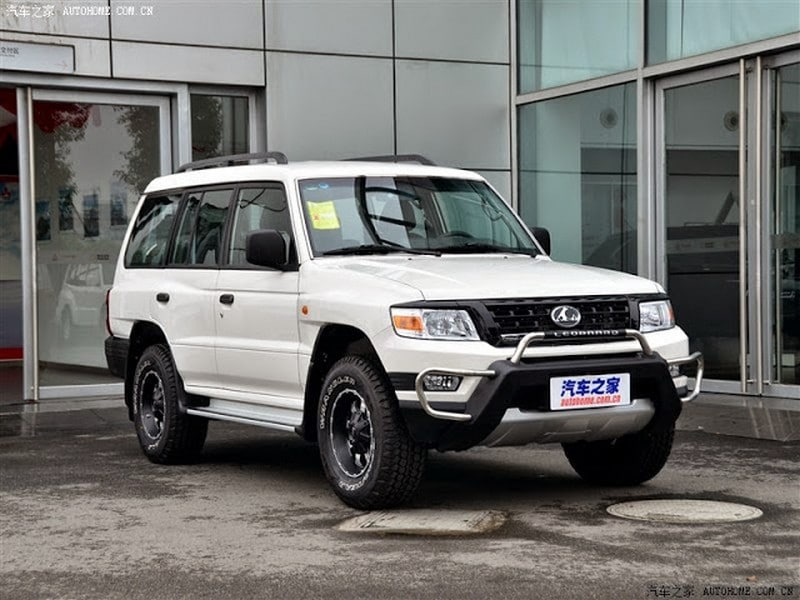
Sales are again rising to more than 25,000 copies per year and Leopaard seems to be on track to become a small, but specialized manufacturer. There should be some room for a brand like Leopaard in a market where SUV sales only seem to increase. The reality, however, is more unruly. Due to the SUV hype, every manufacturer is throwing itself into the segment and for Leopaard it is difficult to keep up with the market.
In 2019, car sales in China declined for the first time in living memory. Due to disappointing sales and lack of financial reserves, Leopaard is forced to completely shut down production in November 2019. Immediately rumors of an impending bankruptcy or a new takeover by another manufacturer surface. In the chaos parent company Changfeng Group formulates a drastic rescue plan at the beginning of 2020.
Among the measures is the sale of the Changsha factory to Geely. Not much later, the factories in Jingmen and Chuzhou, which are still idled, are sold to the local authorities. So the single remaining production line is in Yongzhou and the only remaining model, the Leopaard Mattu, re-enters production in April 2020. The Mattu is the only model that has been adapted to the China VI emission standards. Sales are limited to a few hundred cars per month in 2020.
In limbo
Leopaard could be helped by two interesting new models, shown just before the problems began in 2019. The CS3 Binge is a compact SUV, and there is an SUV coupe simply called Coupe. The latter body style is quickly gaining popularity. However, before Leopaard can put these cars into production, it is forced to shut down again in April 2021. And this time the company has no other option than to apply for “bankruptcy and reorganization”.
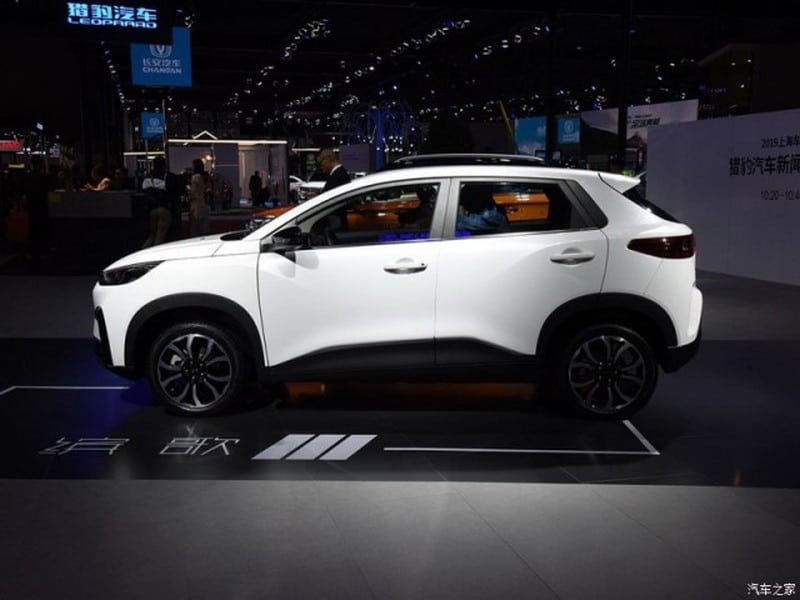

Usually, this is a time-consuming process, especially when new investors can’t be found quickly. A ruling by the Changsha Court in March 2022 sheds some light on the current state of affairs. The ruling says that Hunan Liebao and five of its direct subsidiaries should be merged, because, among the six affiliated companies, there are a large number of closely overlapping fund exchanges, mutual guarantees, and repeated bond declarations, which make it difficult to distinguish between creditor’s rights and debts.
Although the ruling clearly has the creditor’s interest in mind, it shouldn’t be bad news for Leopaard as well. The court wants the brand to survive as a single company, without parts of assets being sold at bargain prices. The same ruling also identified the leading investors in the “reorganization” part of the process. Three rather unknown companies, with businesses related to the automotive industry, but without production qualifications of themselves. We’ll have to exercise some more patience to see if Leopaard can resurrect itself once again from a bleak situation.

Next week
In the final installment of the Pickups and SUVs series, we take a look at ZX Auto.

